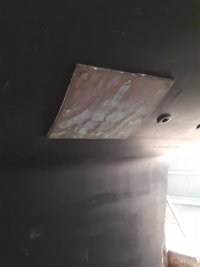WindHorse
Member I
In the process of trying to track down an RF issues (receiving adjacent channel interference on my fancy new VHF), I determined that my mast is not connected to DC ground (not continuity, at least). However, with the coax disconnected from both the antenna AND the radio, I read 12v (with digital multimeter) between the coax shield (black to shield; red to batt). Again, this is with a totally disconnected coax cable on both ends. When I disconnected the ground DC ground connection to the engine/prop, the circuit was broken. This tells me two things: 1) the coax is somehow (intentionally or not) bonded with the mast, and, 2)The circuit for the 12v reading included coax to mast (possibly a "grounded" connector at base of mast), a MYSTERIOUS connection between the mast and the seawater, and back through the prop shaft/engine.
Does anyone know if the 35-2 masts/deck steps were somehow bonded for lightening or RF protection??? I cannot seem to identify any straps/wires from any of the chain plates or mast wiring (FYI, I disconnected the DC ground wire to mast electronics for this test), and yet something other than the DC ground circuit is allowing 12v to flow between the mast and the battery.
Incidentally, I found that I could eliminate the VHF interference issue by simply grounding a chain plate to the DC ground...but I've read that it's best for the mast to be independently grounded to water--and not through the DC ground system... I can obviously get to the bottom of this by hauling out and taking down the mast, but I'd rather know what's going on first.
Any and all ideas, experience, and advice appreciated!
Does anyone know if the 35-2 masts/deck steps were somehow bonded for lightening or RF protection??? I cannot seem to identify any straps/wires from any of the chain plates or mast wiring (FYI, I disconnected the DC ground wire to mast electronics for this test), and yet something other than the DC ground circuit is allowing 12v to flow between the mast and the battery.
Incidentally, I found that I could eliminate the VHF interference issue by simply grounding a chain plate to the DC ground...but I've read that it's best for the mast to be independently grounded to water--and not through the DC ground system... I can obviously get to the bottom of this by hauling out and taking down the mast, but I'd rather know what's going on first.
Any and all ideas, experience, and advice appreciated!

